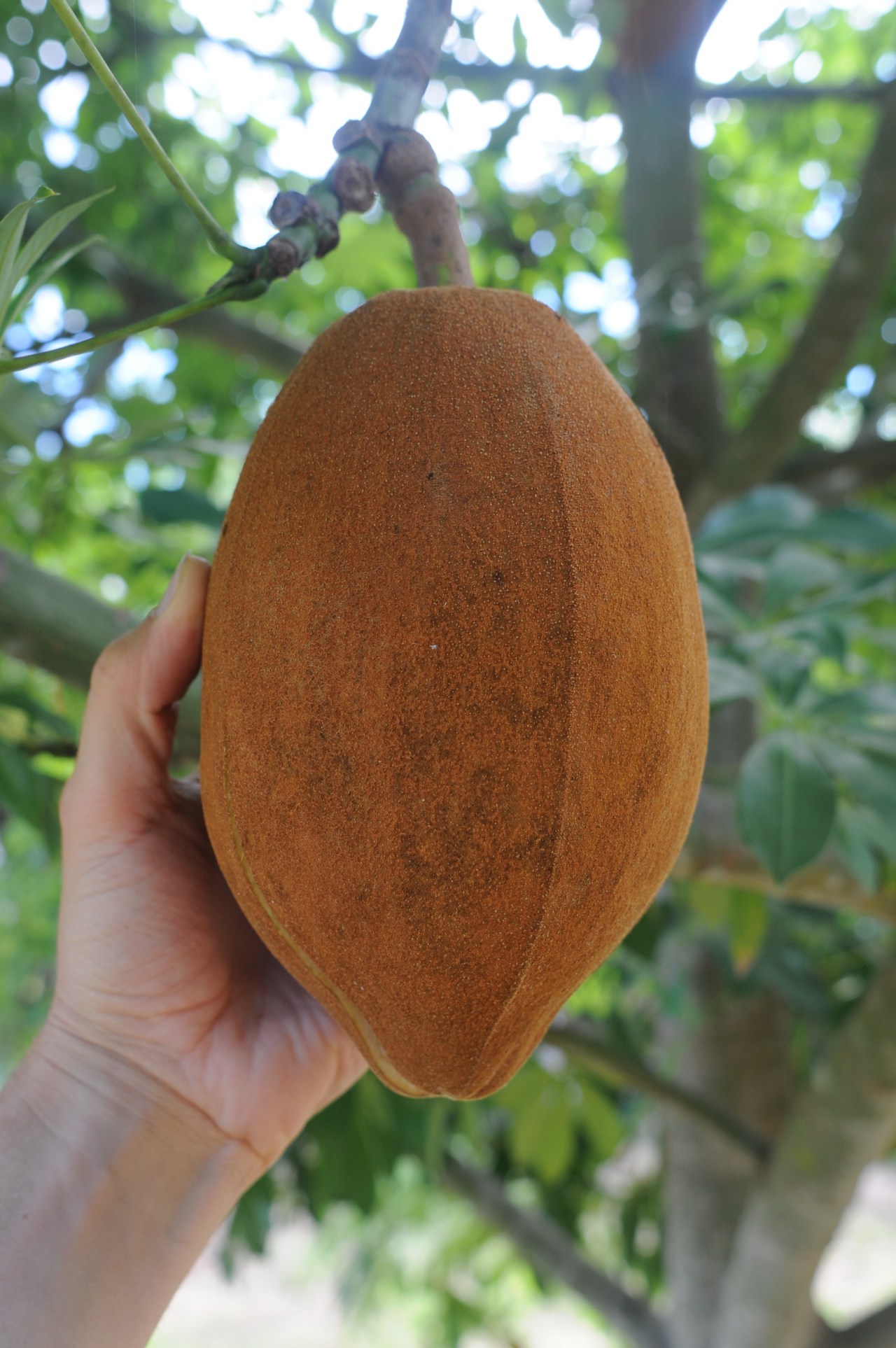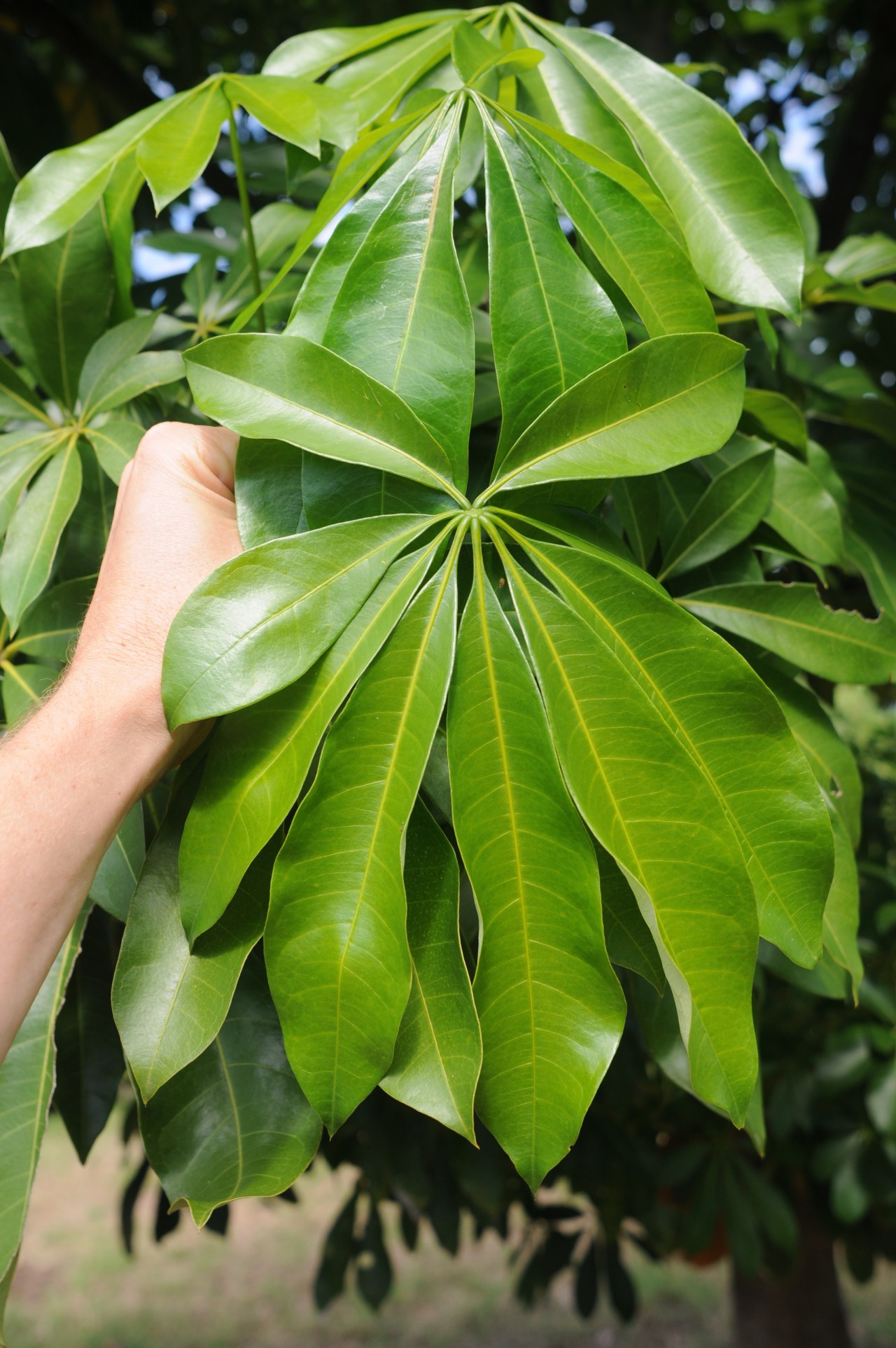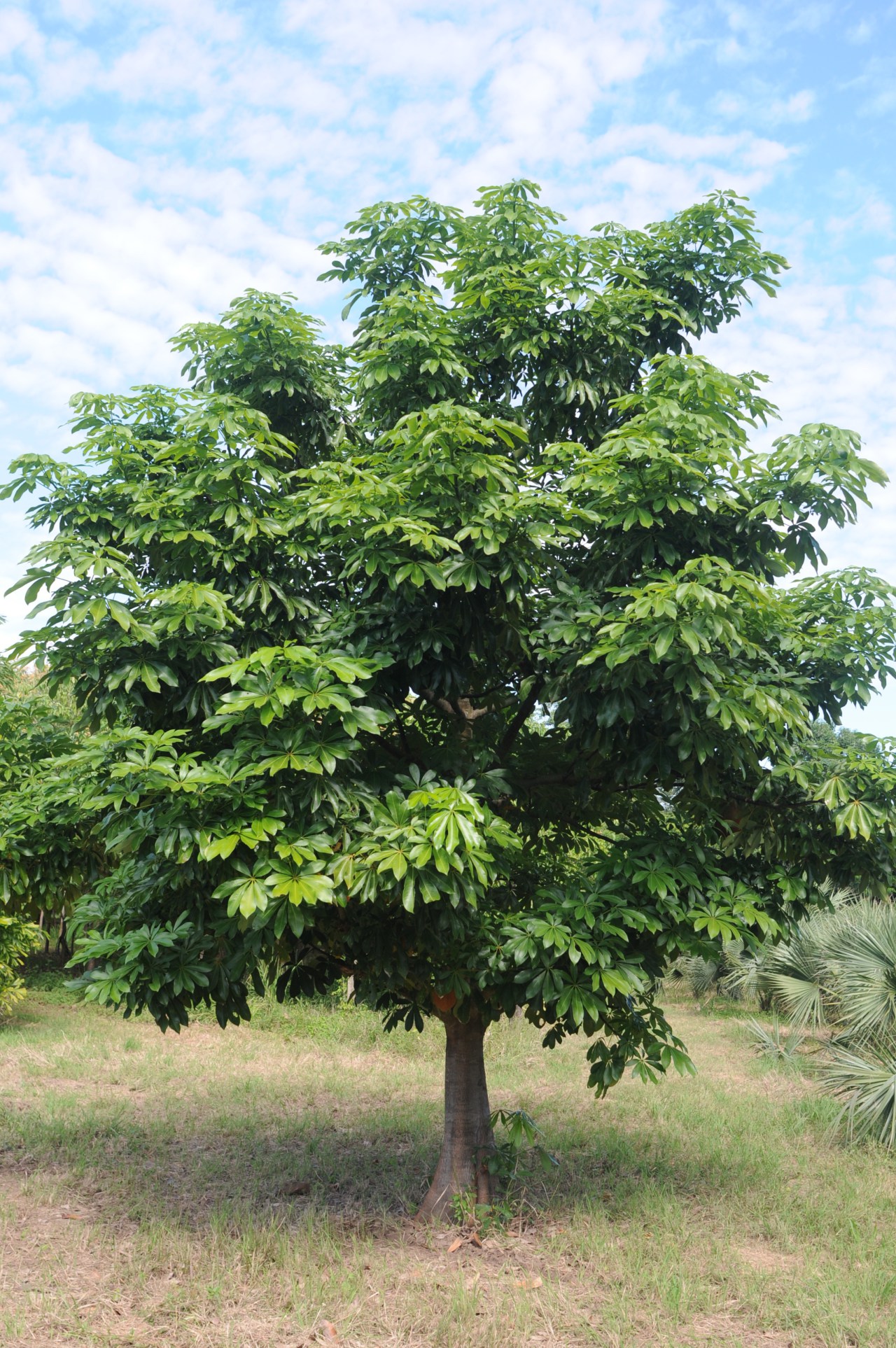Pachira aquatica is a medium size tree native to tropical wetlands of Central and South America. Its native habitat tends to be seasonally flooded lowlands or swamps, however it is adaptable to a wide range of tropical environments. The large, oblong fruit is full of large seeds which taste reminiscent of peanuts, and can be eaten raw, cooked, or ground into flour to make bread. The leaves and flowers are also edible.
Interestingly Pachira aquatica and close relative Pachira glabra are both used and sold with braided trunks as the "money tree", an indoor plant that is supposed to bring monetary wealth. Personally I prefer to plant them in the ground outside.




